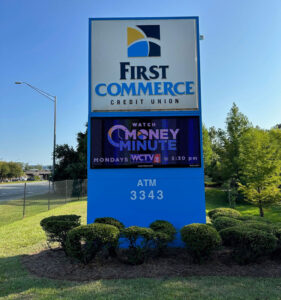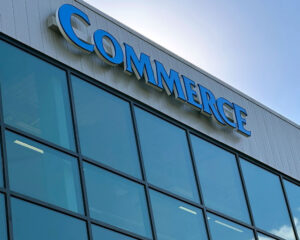 Effective signage serves as a powerful visual tool that communicates messages, guides individuals, and reinforces brand identity. Whether for businesses, organizations, or public spaces, great signage is a vital component of clear communication and user experience. To craft signage that truly stands out and fulfills its intended purpose, it’s essential to consider a comprehensive set of elements. These elements encompass factors such as visibility, readability, design consistency, and more, all of which we will explore in detail below. Whether you’re designing a simple directional sign or a complex brand display, understanding and applying these key principles will help you create signage that not only informs but also captivates and leaves a lasting impression.
Effective signage serves as a powerful visual tool that communicates messages, guides individuals, and reinforces brand identity. Whether for businesses, organizations, or public spaces, great signage is a vital component of clear communication and user experience. To craft signage that truly stands out and fulfills its intended purpose, it’s essential to consider a comprehensive set of elements. These elements encompass factors such as visibility, readability, design consistency, and more, all of which we will explore in detail below. Whether you’re designing a simple directional sign or a complex brand display, understanding and applying these key principles will help you create signage that not only informs but also captivates and leaves a lasting impression.
Below are 14 essential elements that should be considered when creating effective signage:
Achieving clarity in signage is of utmost importance. It signifies that the message should be immediately and effortlessly understood by anyone who comes across it. To attain this, employ straightforward language, clear symbols, and well-designed graphics to convey information without any room for confusion. Refrain from overcrowding the sign with extraneous details, as excessive information can bewilder viewers.
The effectiveness of signage hinges on its visibility. To achieve this, carefully contemplate key factors such as the sign’s dimensions, placement, and the contrast between text and background. Ensuring that your signage remains conspicuous across varying lighting conditions and viewing distances is essential for its impact.
Extending beyond mere visibility, readability is the art of ensuring that the information on the sign can be effortlessly understood. To achieve this, carefully choose appropriate fonts, font sizes, and spacing, guaranteeing that the text can be read comfortably from the intended viewing distance.
Color serves as a pivotal element in both branding and communication. It’s imperative to employ colors that align with your brand identity while also ensuring a pronounced contrast between the text and background. This heightened contrast not only contributes to readability but also reinforces the visual impact of your signage.
Maintaining a consistent design is pivotal to reinforcing your brand identity and achieving instant recognition through your signage. To create a unified visual identity, ensure fonts, colors, and graphic elements remain harmonious across all your signage, establishing a cohesive and easily identifiable brand presence.
Precision in determining the size of your signage is essential. It should align seamlessly with the distance from which it will be viewed and the space it occupies. Carefully consider the proximity of your audience, ensuring that your sign is appropriately sized to maximize visibility and effectiveness.
Strategic positioning is a critical consideration. Place your signage thoughtfully in areas where it’s most likely to capture the attention of your intended audience. Conduct a comprehensive analysis of pedestrian traffic patterns and the organic movement of people to maximize the sign’s effectiveness.
Especially for outdoor signage, durability is paramount. Opt for materials capable of withstanding even the harshest weather conditions and exhibiting resistance to wear and tear. This ensures your signage remains resilient and continues to serve its purpose effectively.
Simplicity is key in signage. Keep your messages succinct, concentrating on conveying the most essential information. If you have additional content to communicate, contemplate utilizing multiple signs or digital displays that can cycle through messages, ensuring clarity and preventing information overload.
Elevate your signage with visuals that not only enhance your message but also engage and draw the viewer’s eye. These graphics should be thoughtfully chosen to align with the context and maintain a high standard of quality, ensuring a professional and impactful presentation.
Prior to signage installation, it’s crucial to conduct a thorough review of local regulations and zoning laws to ensure full compliance. Failing to adhere to these legal requirements can result in substantial fines and even necessitate the removal of your signage, potentially causing significant financial and operational setbacks.
Consistent upkeep of your signage is vital. Regularly inspect and maintain it to prevent issues such as fading or damage, which can leave a negative impression. Ensuring your signage maintains a fresh and well-kept appearance is essential for upholding a positive image and continued effectiveness.
It’s imperative to guarantee that your signage is inclusive, catering to all individuals, including those with disabilities. Incorporate essential features like braille, tactile elements, and accessible color contrasts as necessary to foster a welcoming and inclusive environment. This commitment to accessibility ensures that everyone can engage with your signage effectively.
While functionality remains paramount, aesthetics should not be underestimated. A well-crafted sign has the power to enrich the overall atmosphere of a space, making a substantial contribution to a positive and memorable user experience.
 Incorporating these fundamental principles into your signage design can significantly enhance its effectiveness and impact. Whether you’re striving to improve wayfinding in a bustling urban environment or seeking to create a memorable brand identity for your business, the careful consideration of clarity, visibility, consistency, and other vital elements can make the difference between signage that blends into the background and signage that commands attention and fosters a positive user experience.
Incorporating these fundamental principles into your signage design can significantly enhance its effectiveness and impact. Whether you’re striving to improve wayfinding in a bustling urban environment or seeking to create a memorable brand identity for your business, the careful consideration of clarity, visibility, consistency, and other vital elements can make the difference between signage that blends into the background and signage that commands attention and fosters a positive user experience.
Remember that successful signage is a dynamic aspect of your communication strategy, evolving to meet the changing needs of your audience and environment. Regular evaluation and maintenance of your signage are essential to ensure it continues to serve its purpose effectively.
By embracing these principles and staying attuned to emerging trends and technologies in signage design, you’ll be better equipped to create signage that not only informs but also engages, inspires, and makes a lasting impact on those who encounter it.






